
Defining the Humane Treatment of Food Animals
Concerns about the welfare of food animals have reached a fever pitch, but is there really cause for alarm?
Article Content
Do chickens possess emotional intelligence? Do dairy and beef cattle shed tears while contemplating their fate? Do pigs shudder at the thought of slaughter, wagging their tails to show fear or discontent? For the majority of U.S. consumers, the answer to these questions may be “yes.” According to the Packaged Facts report “Animal Welfare: Issues and Opportunities in the Meat, Poultry, and Egg Markets in the U.S.,” more than half (58%) of U.S. consumers are more concerned about the welfare of food animals than they were a few years ago, and a similar number (53%) believe that products made from humanely raised meat and poultry are healthier. Moreover, a sizable amount of material proclaiming that chickens, cattle, and hogs are suffering (and crying!) on farms and in slaughterhouses can be viewed on the websites of the Humane Society of the United States, People for the Ethical Treatment of Animals, and the American Society for the Prevention of Cruelty to Animals. As more food companies and restaurant chains pledge to offer products from animals raised in conditions that consumers and activists deem humane, scientists and animal husbandry professionals are challenging their concept of humane animal production with the reality of how such practices really impact the welfare of food animals and compromise food safety.
What Is Animal Welfare?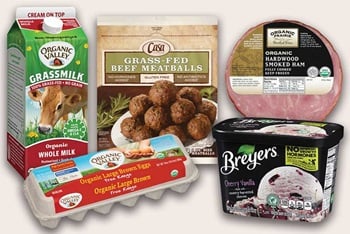
The term “animal welfare” refers to the well-being of an animal, and ensuring an animal’s well-being requires appropriate housing, management, nutrition, disease prevention and treatment, as well as humane handling, euthanasia, and slaughter. In developed countries, most people (including those who consume animal products) have never visited a farm or been in an agricultural environment. “What the needs are to produce [an] abundant food supply that’s safe and wholesome is not very well known among average consumers, but they are very familiar with animal welfare issues,” says Donald Conner, professor and head of the poultry science department at Auburn University. “They are kind of looking for food that—from their viewpoint—is ethically produced.” However, their idea of ethical treatment is often poorly informed and based on the care afforded to their pets. Food animals cannot be characterized as companions or members of the family, but in most instances, the care and attention they receive is optimally ethical for the roles they fulfill in the food system.
Most animals raised for food have short lives; they are usually processed, or harvested, before they reach five years of age. Beef cattle (excluding those kept for breeding) are processed when they attain a weight of 1,200 to 1,400 pounds, which typically takes less than two years. The average dairy cow is removed from dairy production and processed for beef at around age four or five. Chickens raised for meat (broilers) are processed before they reach 13 weeks of age, and egg-laying hens are kept alive for one to three years as long as they are productive egg layers. And pigs (excluding those kept for breeding) are processed when they attain a weight of 240–280 pounds, which occurs around six months of age. Though brief, the lives of food animals are filled with a considerable amount of care and attention in a concerted effort to produce safe, high quality food products. This includes raising livestock indoors to protect them from a variety of antagonistic factors that would compromise their safety, health, and well-being. Nevertheless, the idea that raising livestock indoors is inhumane and detrimental to animals’ health has been gaining traction, inciting a small but slowly increasing demand for meat, poultry, and other animal products from “free” animals. The demand calls for pasture-raised or grass-fed dairy cows, grass-fed beef, cage-free hens, and free-range poultry and pork. While cattle, chickens, and pigs roaming freely on green pastures 24 hours a day may sound idyllic, the reality is that the more freedoms these animals have, the more likely they are to encounter issues causing them stress, illness, and deaths that are less than humane.
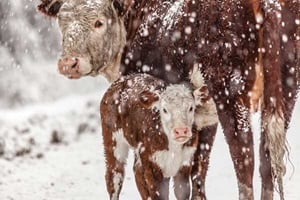 The Cattle Conundrum
The Cattle Conundrum
Cows that are bred for commercial dairy production require a high intake of energy (food) to yield the 21 billion gallons of milk produced in the United States every year. In conventional systems, most dairy cows are raised in barns with free stalls (which allows cows to move around freely within the barns) or, when they are young, pens or hutches. They receive regular feedings of a balanced feed mixture made of grain, silage, and forage such as grasses, legumes, or hay. Their feedings are designed and rationed for optimal nutrition, thereby ensuring that they receive the calories, vitamins, and minerals they need to produce ample milk and maintain weight. But pastured dairy cows, which rely on available grass and forage, can often be undernourished. Droughts, winter, storms, and other adverse weather conditions can reduce the amount of forage for pastured dairy cows; poor weather conditions can also bring about untimely deaths from lightning strikes or hot or cold extremes in temperatures. The unpredictability of weather combined with limited areas for grazing (a pastured dairy cow requires nine acres of land for grazing), poor plant recovery, parasites, and toxic plants or plant molds that produce mycotoxins can translate to pastured dairy cows being stressed and underweight, producing at least 30% less milk than conventional dairy cows or no milk at all. Undernourishment of pastured dairy cows can also lead to reproductive issues, health problems, and higher mortality. For this reason, most dairy producers supplement the energy intake of grass-fed dairy cows with grain-based feed. “It is not feasible to raise U.S. dairy and beef cattle solely in pastures that supply only grass and forage,” says Matt Stommes, sector manager for beef, pork, and poultry at Wells Fargo Food and Agribusiness Industry Advisors. “There needs to be diversity in production methods. U.S. consumers demand a variety of milk and beef products that require multiple production methods.”
Contrary to popular belief, all beef cattle—whether conventional, organic, or grass-fed—spend the majority of their lives grazing on grasses and other forage. “For the first eight to 14 months of cattle’s lives, they are typically grazing [on] pasture or rangelands. As a result, most beef in the [United States] is a combination of extensive grazing and confinement systems,” says Sara Place, senior director of sustainable beef production research, National Cattlemen’s Beef Association. The difference between conventional beef cattle and pastured beef cattle is in how they are finished (i.e., the diet they consume during the final months before harvesting). Conventional beef cattle spend the last four to six months of their lives in concentrated animal feeding operations (CAFOs), or feedlots, where they consume daily rations of a carefully balanced mix of grass, hay, and other forages as well as other feed sources (e.g., tops of sugar beets, distillers grains, etc.). Designed by animal nutritionists, these dietary rations along with clean water and routine preventive veterinary care help prevent disease in grain-finished cattle. “When cattle are housed in CAFOs, … the animals are provided adequate room to move around freely and interact with the other cattle in the pen. Despite the available space, cattle will sometimes congregate closely together within a pen similar to as they would on pasture because they are herd animals,” Place explains. “Housing and managing cattle for the last four [to] six months of their [lives] in feedlots improves the overall efficiency of the U.S. beef industry by shortening the time to slaughter.” As a result, grain-finished beef cattle spend less time producing manure and methane gas, which means they have a smaller carbon footprint than grass-fed beef cattle. “This means fewer natural resources per [pound] of beef are required as compared to beef production systems that do not use confinement,” Place adds. “However, there could be an issue with concentrating manure nutrients in a small geographic area if those nutrients are not managed properly. Fortunately, large CAFOs are regulated under the Clean Water Act and capture any rainwater runoff from their facilities.”
Grass-fed beef cattle, known in the beef industry as grass-finished beef cattle, spend their entire lives grazing in pastures. As with pasture-raised dairy cows, the nutrient and caloric intake of grass-fed beef cattle can vary widely depending on the climate, the season, and quality of pasture. Environmental issues can also take a toll on grass-finished beef cattle, subjecting them to inadequate calorie or nutrient intake or ingestion of toxic plants or mycotoxins, injury from inclement weather events, and internal-parasite infections. Consequently, grass-fed beef cattle require more time to reach market weight, and they tend to be leaner than conventional beef cattle—but this does not mean that grass-fed beef is healthier for human consumption. “All beef, regardless of finishing method, provides 10 essential nutrients (zinc, iron, protein, [vitamins] B6 and B12, choline, selenium, riboflavin, niacin, and phosphorus). While an animal’s diet can impact beef’s fatty-acid profile, it remains primarily monounsaturated and saturated fatty acids regardless of the feeding practice,” says Shelley Johnson, director of nutrition outreach, National Cattlemen’s Beef Association. “There are no significant differences in nutrient content between the two kinds of beef.”
Still, there are other advantages to finishing beef cattle with grass and forage that activists never promote and consumers don’t consider. “Grass-finished cattle can help keep pastures from overgrowing because they will eat certain weeds and some types of woody overgrowth. Grain-finished cattle can do this as well while they are grazing for the first 12 months of their life,” says Josh White, executive director of producer education, National Cattlemen’s Beef Association. The natural grazing activity increases plant diversity and reduces the risk of wildfires in woody areas. “Regardless [of whether] cattle are grass- or grain-finished, beef cattle in the [United States] spend the majority of their lives consuming grass and other forages … and can thus contribute to these benefits of maintaining grazing lands,” Place adds.
Despite the benefits of allowing beef cattle to spend their entire lives grazing in pastures, this method is not a realistic option to meet the U.S. demand for beef products. “Within the [United States], some regions receive far less moisture (in the West) or have long winters, which can make grass-finishing cattle in a cost-effective and timely manner difficult,” Place says. “The market for grass-fed beef is growing at a high rate of approximately 25%–35% annually. However, overall consumption of U.S.-produced grass-fed beef domestically is less than 1% of all U.S.-produced beef,” Stommes says. If consumers realize that all cattle eat grass and forages, perhaps the influence of negative and misleading materials will diminish. “Conventionally raised beef, which is generally finished in a feedlot, really isn’t that different from grass-finished beef,” White states. “For grain-finished cattle, less than 10% of what they consume in their life cycle is actually grain.”
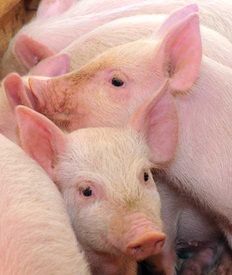 How Piggies Go to Market
How Piggies Go to Market
Conventional pig farming is the result of modern practices adopted out of concern for animal well-being and food safety. Because of the modern practices on conventional pig farms, some pig diseases that were common in the past (such as classical swine fever, pseudorabies, and swine brucellosis) have been eliminated. As a result, conventionally raised pigs are healthier than they were in the past, and a healthier pig is likely a happier pig. Conventional pigs are raised indoors in pens to protect them from injury, illnesses, parasites, predators, and extremes in weather. Their diet consists of precisely managed rations of corn, wheat, soybeans, vitamins, and minerals to ensure proper nutrition. In addition, pig farming is divided into specialized sectors that care for pigs at different stages in their life cycle: 1) farrow-to-wean farms, where sows are bred and pigs are raised until they are weaned; 2) farrow-to-nursery farms, which specialize in breeding sows and raising pigs until they attain a weight of 40 to 50 pounds; 3) wean-to-finish farms, which raise weaned pigs and grow them until they reach market weight (around 280 pounds); 4) farrow-to-finish farms, where pigs stay from breeding to finishing at a market weight; and 5) finishing farms, which raise pigs from farrow-to-nursery farms until they reach market weight.
Two of the biggest issues of concern with conventional pork production are the use of gestation stalls and boar castration. Pregnant sows are placed in individual housing stalls or crates so that they can receive optimal nutrition during pregnancy and to protect them from aggressive behaviors from other sows (pregnant sows will hog food rations and kill piglets that are not their own). And the purpose of castration is to diminish boars’ level of aggression toward other pigs and caretakers and to avoid an accumulation of compounds in the meat of sexually mature male pigs. In uncastrated male pigs, by the time they reach sexual maturation, certain compounds (predominantly androstenone and skatole) impart an unpleasant odor and taste to their meat—a quality known as boar taint. According to the American Veterinary Medicine Association, 75% of consumers find meat from boars (intact male pigs) unpleasant in comparison to meat from barrows (castrated male pigs) (AVMA 2013). Moreover, the U.S. Dept. of Agriculture prohibits the commercial sale of boar-tainted meat. Two methods are used to castrate pigs: surgical castration and immunocastration, in which a compound is injected that decreases production of testosterone and androstenone while increasing metabolism of skatole. The American Veterinary Medicine Association recommends that in the case of surgical castration, piglets undergo the procedure as early as possible and with the aid of an anesthetic or analgesic.
Free-range pigs are kept outdoors most of the year with access to open shelter, which may seem like a good thing until one considers the issues and risks that are inherent to raising livestock in alfresco elements. As with other pastured livestock, free-range pigs graze on grasses and other forage, but most also receive processed pig feed to meet their daily caloric and nutrient needs. Pigs do not have functional sweat glands and can get sunburned or suffer sunstrokes from too much sun exposure; to cool off, free-range pigs must lie in mud or water. Therefore, being outdoors during elevated temperatures (75°F and higher) as well as cold temperatures makes them very uncomfortable and can cause fatalities. The unpredictability of weather combined with limited areas for grazing, poor pasture recovery, growth of toxic plants or plant molds that produce mycotoxins, parasites, and predation can translate to free-range pigs that are stressed, underweight, or ill. In addition, because pigs have a natural tendency to root and destroy soil and plants, a common practice in free-range pig farming is to attach one or more rings onto the snouts of pigs to keep them from rooting. Sexually mature free-range male pigs exhibit the same aggressive behaviors as conventional pigs, so most free-range piglets are also castrated with or without an anesthetic or analgesic. Spaying female free-range pigs may also occur to keep them from mating with wild boars that are not part of the herd, which would dilute the purebred pedigree and potentially introduce disease.
Nevertheless, for both conventional and free-range management systems of pig production, veterinarians, scientists, and agriculturalists developed practices to minimize injuries to pigs and maximize the safety and quality of pork products. “At the National Pork Board, we represent all producers and strongly believe in allowing pig farmers to make choices on how to best raise pigs on their farm,” says Dave Pyburn, vice president of science and technology, National Pork Board. “The choice that a pig farmer makes will depend upon the capabilities of their labor and management personnel as well as the facilities available to them.” Pyburn, a veterinarian, emphasizes, “Pigs can be raised and managed well in both indoor and outdoor environments.”
Should Chickens Flee the Coop?
Broilers are the result of artificial selection and breeding, yielding birds that can reach a weight of five pounds in about five weeks. In conventional production systems, commercial broilers live uncaged in large poultry houses with constant access to water and feed, which is made up of corn, soybeans, vitamins, and minerals. And farmers are able to control every aspect of the birds’ environment (including temperature and ventilation) in modern conventional poultry houses to ensure optimal conditions for each broiler’s health and development. It is a highly efficient system that allows broilers to achieve incredible gains in size while protecting them from weather extremes, parasites, predators, diseases, and biosecurity hazards.
Conventional laying hens are also raised in poultry houses, but most are separated into cages. These cages are designed to allow for production efficiency and to ensure that the birds receive nutritionally balanced feed and constant access to water. As is the case with conventional broilers, laying hens in this environment are protected from weather extremes, parasites, predators, diseases, and biosecurity hazards. They are also protected from aggressive behaviors that can be exhibited by sexually mature hens. “In my opinion, I don’t think there are humane issues in the traditional caging systems. [The birds] get very good health care, and the hens are highly productive: A hen will lay an egg a day,” Conner asserts. “One of the signs of stress is that a hen will slow down production or go out of production. Yet in a traditional caging system, hens are still laying an egg a day.” Nevertheless, activists’ concerns and consumer perceptions are prompting the poultry industry to rethink and retool successful, efficient systems that have been in place for decades. Yielding to the pressure from activists and some consumers, 100 grocery chains and 60 restaurant chains have even committed to using and selling only cage-free eggs in the next five to 10 years. This means that instead of raising chickens in poultry houses and conventional cages and utilizing traditional preventive measures, some commercial broiler and egg producers are switching to “free” production systems.
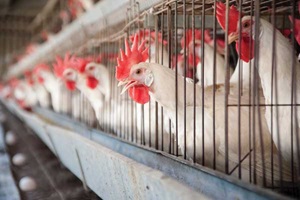 However, there are a number of problems with freeing the birds: Cage production was a long-term attempt to produce an environment that would control what chickens are exposed to, keeping them healthy and alive while making egg production efficient, safer, and more affordable to producers and consumers. In cage-free systems, hens either roam on the floor or hop onto a series of perches within poultry houses. Because of this, there is a decrease in egg yield as eggs laid on floors can be broken or otherwise lost, cage-free eggs have an increased likelihood of being contaminated, and production costs are significantly higher for cage-free egg producers (this cost increase will be passed along to consumers). More glaringly, laying hens in cage-free systems are at greater risk of diseases, lice and mite infestation, and mortality—and not just from the aforementioned factors. Sexually mature hens can exhibit pecking behaviors, attacking each other to establish dominance and submission. “The term ‘pecking order’ is a real thing. So when you move birds into more of a flock setting, you’ll get dominant and submissive birds,” Conner says. Oftentimes, pecking can result in serious injury, death, and even cannibalism. This behavior is expressed even in enriched colony systems, which many European poultry farmers have adopted in an effort to provide more humane environments for chickens (the European Union has banned the use of conventional cages for hens). In enriched colony systems, 30 to 200 birds are housed in larger cages that provide more room for hens to move around and nesting areas and foraging material so that hens can engage in natural behaviors.
However, there are a number of problems with freeing the birds: Cage production was a long-term attempt to produce an environment that would control what chickens are exposed to, keeping them healthy and alive while making egg production efficient, safer, and more affordable to producers and consumers. In cage-free systems, hens either roam on the floor or hop onto a series of perches within poultry houses. Because of this, there is a decrease in egg yield as eggs laid on floors can be broken or otherwise lost, cage-free eggs have an increased likelihood of being contaminated, and production costs are significantly higher for cage-free egg producers (this cost increase will be passed along to consumers). More glaringly, laying hens in cage-free systems are at greater risk of diseases, lice and mite infestation, and mortality—and not just from the aforementioned factors. Sexually mature hens can exhibit pecking behaviors, attacking each other to establish dominance and submission. “The term ‘pecking order’ is a real thing. So when you move birds into more of a flock setting, you’ll get dominant and submissive birds,” Conner says. Oftentimes, pecking can result in serious injury, death, and even cannibalism. This behavior is expressed even in enriched colony systems, which many European poultry farmers have adopted in an effort to provide more humane environments for chickens (the European Union has banned the use of conventional cages for hens). In enriched colony systems, 30 to 200 birds are housed in larger cages that provide more room for hens to move around and nesting areas and foraging material so that hens can engage in natural behaviors.
In free-range systems (free-range usually applies to chickens raised for meat), broilers are so young that dominance, aggression, and cannibalism are usually not an issue. But because free-range broilers are outside either part of the day or, in the case of pastured chickens, all day, they are at increased risk for diseases (especially avian influenza), parasites, predation (chickens have more natural predators than other livestock), and weather extremes (chickens have no sweat glands and very little insulation). “If you look at birds in a traditional cage setting, you have a very controlled environment. As you move to cage-free, you have a little less control of that environment. As you move to free-range, you have even less control in that environment. And in pasture systems, you have the least control,” Conner explains. “You have the weather, other animals, and so forth that [chickens] could interact with.” And since neither the eggs nor the meat from free birds are more nutritious than those of broilers and laying hens in conventional production systems, free-bird products may not be worth the premium price. In fact, the products from free birds are at greater risk for food safety issues (Spencer 2014, Weaver 2016, The Poultry Site 2017). “The current domestic demand and production for cage-free eggs is balanced. Low conventional-egg prices over the past year resulted in less demand for cage-free eggs since they now command even more of a premium over conventional eggs,” Stommes says. Inadvertently, this may jeopardize pledges by certain foodservice and retail operations to use and sell only cage-free eggs. “It is difficult for U.S. egg producers to meet the current pledge timeline by foodservice and retail chains. Most domestic egg companies are losing money with low egg prices, resulting in fewer cage-free barn projects,” Stommes reveals. “Fewer cage-free operations will result in fewer sources for these other restaurants, companies, and retailers to satisfy their products and ingredients.”
Controversial ‘Additives’
Two other animal welfare issues that cut across all commercial livestock industries are the use of hormones and antibiotics. Produced naturally in both plants and animals, hormones are chemical substances that act as messengers to help living organisms function properly. In animals, different hormones perform certain functions that aid in growth and development, metabolism, sexual function, reproduction, and other specific roles within the body. Because all animals have naturally occurring hormones in their systems, there is no such thing as hormone-free milk, meat, or eggs. In addition, farmers may inject beef and dairy cattle with supplemental hormones to speed up growth in beef cattle and to increase milk production in dairy cattle (the use of growth hormones in dairy cattle is prohibited). The hormone that consumers may be most familiar with is recombinant bovine somatotropin (rbST), which is the synthetic version of bovine somatotropin. Bovine somatotropin is naturally present in all lactating cows and helps them convert feed into milk. rbST is manmade, and the process used to make rbST is the same process used to create insulin (the hormone that regulates blood glucose) for diabetics. The U.S. Food and Drug Administration (FDA) prohibits the administering of additional hormones in poultry and pork; dairy cows, beef cattle, and sheep are the only livestock approved for added hormones. Also, the FDA has determined that milk, meat, and other products from animals given rbST or other approved hormones are safe for human consumption.
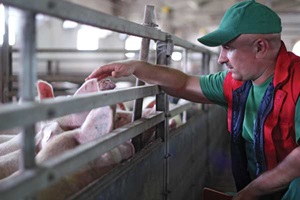 Like humans and pets, food animals can and do acquire bacterial infections that can make them very sick or be fatal. When humans and pets acquire infections, they receive antibiotics to cure their illness and rid them of discomfort, yet advocacy for no-antibiotics-ever food animal production is emerging. This is puzzling as animal activists and consumers claim to be concerned that animals are comfortable, treated well, and under no stress, but the failure to administer antibiotics (or other medicines such as vaccines and other antimicrobials) to sick food animals certainly causes them stress, discomfort, and poor well-being. “Sometimes animals get sick, and farmers and ranchers agree that treating a sick animal is the responsible and humane thing to do,” White says. Pyburn agrees: “No matter how you plan to manage raising pigs on your farm, when the pigs get sick and treatment with an antibiotic can be beneficial to their health, welfare, and possibly food safety, then [there] needs to be a treatment plan and, if needed, an alternative marketing plan for those that can no longer be labeled as ‘raised without antibiotics.’ Humane care involves pig farmers and veterinarians working together to prevent and treat disease when necessary.”
Like humans and pets, food animals can and do acquire bacterial infections that can make them very sick or be fatal. When humans and pets acquire infections, they receive antibiotics to cure their illness and rid them of discomfort, yet advocacy for no-antibiotics-ever food animal production is emerging. This is puzzling as animal activists and consumers claim to be concerned that animals are comfortable, treated well, and under no stress, but the failure to administer antibiotics (or other medicines such as vaccines and other antimicrobials) to sick food animals certainly causes them stress, discomfort, and poor well-being. “Sometimes animals get sick, and farmers and ranchers agree that treating a sick animal is the responsible and humane thing to do,” White says. Pyburn agrees: “No matter how you plan to manage raising pigs on your farm, when the pigs get sick and treatment with an antibiotic can be beneficial to their health, welfare, and possibly food safety, then [there] needs to be a treatment plan and, if needed, an alternative marketing plan for those that can no longer be labeled as ‘raised without antibiotics.’ Humane care involves pig farmers and veterinarians working together to prevent and treat disease when necessary.”
Antibiotics are administered to food animals for two reasons: to prevent disease and to treat disease. As of January 1, 2017, the FDA has banned the use of medically important antimicrobials in animals for growth promotion and feed efficiency (both of which facilitate uniformity of size); furthermore, the FDA requires a prescription from a veterinarian to use medically important antibiotics in food animals for any other reasons (the Veterinary Feed Directive). The FDA also established antibiotic withdrawal standards that all food-animal producers must follow: Animals that receive antibiotics for either disease prevention or disease treatment must undergo a withdrawal period before their products (meat, milk, eggs) can enter the food system. Milk and other products from animals treated with antibiotics are tested to ensure that they do not contain residues of antibiotics; if antibiotic residues are detected, the products are destroyed. For this reason, all U.S. animal food products are antibiotic-free. Still, there is a concern that using antibiotics in food animals may be the leading cause of antimicrobial resistance. “In the lab, if you expose bacteria to a low level of antibiotic, over time some will survive, and they’ll start to replicate. And that’s the theory of what’s going on inside [food] animals: You’re not killing all the bacteria; you’re killing most of them. Those that survive are going to develop antibiotic resistance,” explains Ken Macklin, a poultry science professor and extension specialist at Auburn University. And while Macklin, a microbiologist, believes that antibiotic use in food animals may have contributed to the rise of antibiotic resistance, he does not believe it is the main reason for the problem. “I don’t think it’s as much of a role or as serious a role as the other components where antibiotics are being used, which is companion animals—dogs and cats—and also people,” Macklin says. “Where did antibiotic resistance come from? [Antibiotics are] natural products, most of them, either from different bacteria or different fungi. So there were other organisms competing with these [microbes] that had developed resistance. So really, you could almost say that resistance is naturally occurring.”
While animal rights activists and some consumers may think that free-range, cage-free, and antibiotic-free production systems provide a simpler, more idyllic life for livestock, scientific evidence indicates that they actually do not. Modern conventional systems were put in place not only to increase the efficiency of production but also to provide better protection for food animals and, in most cases, to improve their comfort, nutrition, and well-being. “They’re not pets,” Macklin stresses. “You can’t view them as something you’re going to be hugging. They’re being raised for food.” Cattle, chickens, and pigs make up a vital segment of the food industry and a significant investment for farmers. Conventional animal production strategies enable farmers to protect their investment as best they can: with science-based methods and strategies that ensure the well-being of food animals and the safety and quality of the foods they provide.
Toni Tarver is senior writer/editor of Food Technology magazine ([email protected]).





